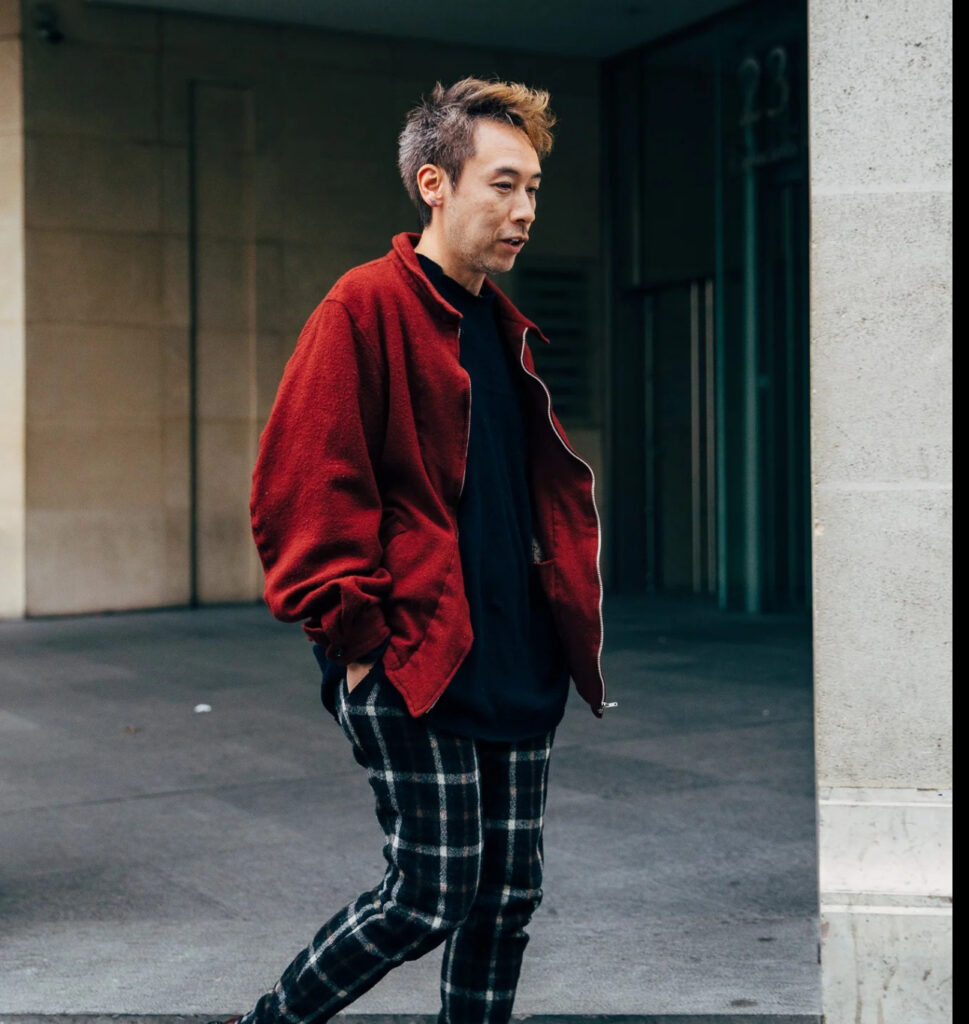Jun Takahashi, the founder of Undercover, is more than just a fashion designer—he is a revolutionary artist reshaping how we view fashion. Since its inception in 1993, Undercover has defied conventional boundaries, creating collections that feel more like thought-provoking art installations than ready-to-wear clothing. By blending punk aesthetics, avant-garde ideas, and intricate storytelling, Takahashi has built a brand that consistently challenges norms and influences global fashion.
The Philosophy Behind Undercover
Undercover operates on the ethos that fashion is an extension of art, and Takahashi’s work reflects this belief. For him, clothing is a medium for storytelling, social commentary, and self-expression. His designs are rich with symbolism, references to subcultures, and experimental forms, turning every collection into a conceptual narrative.
Core Elements of Takahashi’s Philosophy:
Artistic Integrity Over Trends:
Takahashi prioritizes creativity over commercial viability, producing collections that remain authentic to his vision rather than conforming to fleeting trends.
Blurring Boundaries:
His work blends elements of fashion, music, and visual art, creating a multi-disciplinary approach to design.
Punk Spirit:
Influenced by punk culture, Takahashi’s designs often challenge authority and embrace individuality, echoing his roots in rebellion.
Early Beginnings: From Punk to Paris
Jun Takahashi’s journey began in the 1980s when he discovered punk music, particularly the Sex Pistols, whose anti-establishment ethos profoundly influenced him. This passion for punk led him to study at Tokyo’s Bunka Fashion College, where he honed his skills and started to develop his signature style.
The Birth of Undercover (1993):
•Takahashi co-founded Undercover with creative partner Nigo (of A Bathing Ape fame).
•Initially focused on streetwear with a punk edge, the brand quickly gained a cult following in Tokyo.
•Early designs were DIY-inspired, featuring distressed fabrics, bold graphics, and unconventional silhouettes.
Breaking into the Global Scene:
In 2002, Takahashi debuted Undercover at Paris Fashion Week. The show, titled Scab, showcased deconstructed clothing and bandage-like fabrics, instantly cementing his status as an avant-garde designer.
Undercover as Art: Not Just Clothes
For Takahashi, Undercover’s collections are less about wearability and more about creating a visceral experience. Each collection tells a story, often inspired by literature, film, or societal issues.
Notable Collections:
SS2003: Paper Doll
Inspired by fragility and transformation, this collection featured dresses that looked as if they were cut from paper, with delicate details that blurred the line between clothing and sculpture.
AW2006: But Beautiful
This collection explored the concept of duality, with pieces that combined hard and soft textures, light and dark colors, creating a dialogue between opposites.
SS2018: Order/Disorder
A reflection on chaos and control, this collection featured military-inspired jackets juxtaposed with delicate floral prints, symbolizing the tension between aggression and peace.
Collaborations as Art Projects:
Takahashi frequently collaborates with other creatives to push the boundaries of his work. Notable partnerships include:
•Nike: The Gyakusou line blends performance wear with minimalist aesthetics, inspired by Takahashi’s love of running.
•Uniqlo: A more accessible collaboration, where he reinterpreted everyday essentials with his artistic flair.
•Cindy Sherman: A collection inspired by Sherman’s provocative photography, integrating themes of identity and transformation.
Punk Aesthetics in Takahashi’s Work
Punk’s influence runs deep in Undercover’s DNA. Takahashi sees punk not just as a musical genre but as a mindset—one that rejects conformity and embraces subversion.
Key Punk Elements in Undercover:
DIY Spirit:
Distressed fabrics, safety pins, and hand-painted details often feature in his collections.
Graphic Statements:
Slogans like “We Make Noise Not Clothes” and “Chaos/Balance” echo the rebellious ethos of punk.
Subcultural References:
Takahashi frequently draws inspiration from underground movements, incorporating their aesthetics into high fashion.
Takahashi’s Approach to Storytelling
Each Undercover collection is a narrative, often layered with references that invite interpretation. Takahashi’s storytelling is immersive, drawing from literature, film, and personal experiences.
Literary and Cinematic Inspirations:
•William Gibson’s Neuromancer: Takahashi has referenced the cyberpunk classic, reflecting its dystopian themes in futuristic designs.
•Stanley Kubrick’s 2001: A Space Odyssey: His AW2014 collection was an ode to Kubrick’s vision, featuring space-age silhouettes and bold graphics.
•Kafka’s The Metamorphosis: Themes of transformation often echo in Takahashi’s work, from insect-like patterns to cocoon-like garments.
The Artistic Process: From Concept to Creation
Takahashi’s creative process begins with a concept, which he meticulously develops into a cohesive collection. Unlike many designers, he often takes a hands-on approach, experimenting with materials and techniques in the studio.
Process Overview:
Concept Development:
Takahashi starts with a theme, drawing sketches and creating mood boards to visualize the narrative.
Material Experimentation:
Fabric manipulation is key, with techniques like dyeing, pleating, and deconstruction central to his process.
Connection:
Takahashi works closely with artisans, graphic designers, and technologists to bring his vision to life.
Presentation:
Each runway show is a theatrical event, with set designs, music, and lighting that immerse audiences in the story.
Undercover’s Impression on Fashion
Undercover’s influence extends far beyond the runway. By merging art and fashion, Takahashi has inspired a generation of designers to prioritize creativity and authenticity over commercial success.
Cultural Significance:
•Redefining Streetwear: Undercover helped elevate streetwear to high fashion, proving that casual wear can be as conceptual as couture.
•Global Influence: Takahashi’s work has resonated with designers like Virgil Abloh and Raf Simons, who credit Undercover as a major inspiration.
•Bridging Subcultures: By incorporating elements of punk, goth, and cyberpunk, Takahashi has brought niche aesthetics into the mainstream.
Jun Takahashi Today
Despite decades in the industry, Takahashi remains as innovative as ever. Recent collections continue to push boundaries, exploring themes like sustainability, technology, and human connection.
Sustainability Focus:
Takahashi has started to experiment with eco-friendly materials and processes, reflecting a growing awareness of fashion’s environmental impact.
Digital Innovation:
Undercover has embraced virtual presentations and augmented reality, ensuring its relevance in an increasingly digital world.
Final Thoughts
Jun Takahashi’s work with Undercover proves that fashion can be more than just clothing—it can be a medium for storytelling, self-expression, and cultural critique. By prioritizing creativity over trends and embracing a multidisciplinary approach, Takahashi has elevated fashion to the level of fine art.
As he continues to innovate, Takahashi inspires us to view clothing not just as garments but as a canvas for imagination and emotion. Through Undercover, he has carved a space where art and fashion collide, creating a legacy that will influence generations to come.
No comments yet.








